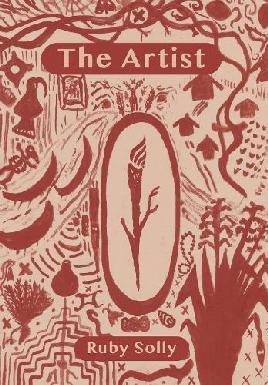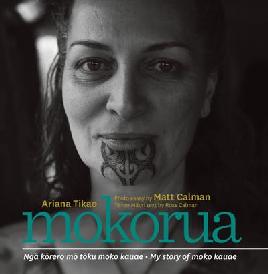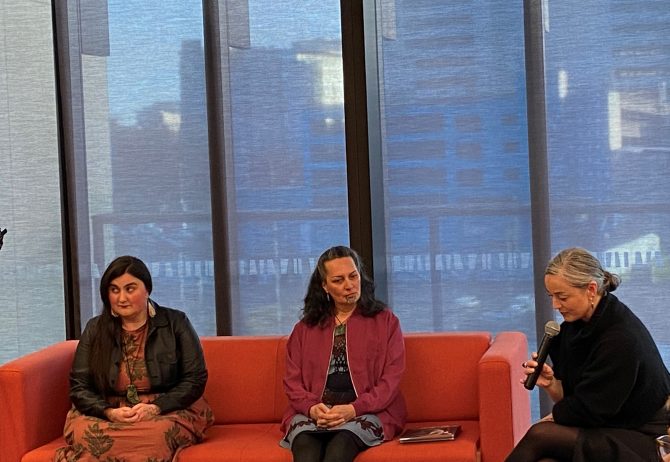Where do we position ourselves in the world?
The panel session of Summoning Whakapapa guides you towards finding the answer. In this session, taonga pūoro practitioner Ruby Solly (Kāi Tahu, Waitaha, Kāti Māmoe) and Ariana Tikao (Kāi Tahu) discussed writing family histories and the protection of whakapapa.
The discussion started with defining the concept of whakapapa. Ariana holds that according to Māori kōreo, the organisation of society is based on whakapapa. Just like a spider web, each point with its traditions and worldviews has connections within a society. This is different from the view of systems and structures which are found in a hierarchical society. For Ruby, whakapapa is everything that includes connections, traditions, ancestors, whānau and more. She added the global element to whakapapa and recognised her Jewish whakapapa. She said,
It [whakapapa] is everything. It is already there. we just learn to articulate and find out ourselves in it.
Then, they talked about how they are inspired to activate their whakapapa. Ariana recognised her Kai Tahu ancestors and research that has been done on Māori traditions, like food gathering. This inspired her and enabled her to tell and retell her own stories. Ruby thought that manuscripts written by ancestors and whānau were inspiring. She shared an interesting story about how her name was decided by her parents with a whakapapa sheet. For her, her position and connections shown on the sheet have made lots of sense to her, which is articulated in her book the Artist. Ariana read her poem entitled Pōua’s oriori which seamlessly fitted into the conversation.
Unlike a Western perspective on knowledge, knowledge for Māori is derived and transferred within their whakapapa. It is not everyone that has a right to tell a story about anyone. When being asked how they navigated this in their own work as a writer, Ruby found there were different thoughts even among Māori people. She believed that the idea of coding was important. A writer needs to gain extra information from history like the Kāi Tahu history and acknowledge the source information so readers can see connections. Then, she read a poem about peaceful dreaming, the darkness and the light from an artist to share the ideas of diversity and different ways of validating on what we know. At the beginning of Ariana's book Mokorua, she described her dream that contributed to her decision on taking on her moko kauae.
There are some beautiful photos and illustrations in both Ariana's and Ruby's book. Ariana recalled the process of how those photos were taken in her moko ceremony. They were added with text kōrero, stories, and put in the context of whanau to tell her story. These pictures showed things that happened behind the scene and explain why she decided to get her moko kauae. Ariana emphasized,
Politically, I want to give people a chance to know the cultural significance of moko kauae.
Ruby shared the process of how she put images of people in different generations together on a board in your studio. For her, it is really nice to be able to have visual presentations of connections and relationships.
The session closed with a casual talk about the expansion of Māori collections in New Zealand libraries in the past several decades. They provide resources for new generations to find themselves in their whakapapa.
Find out more
- Our Te Ao Māori resources
- WORD Christchurch website and 2023 programme
- Our WORD Christchurch 2023 page
- Follow @WORDChCh on Twitter
- Follow WORDchch on Instagram
- Like WORD Christchurch on Facebook
- Photos from WORD Christchurch 2023






Add a comment to: WORD Christchurch 2023: Summoning whakapapa with personal stories